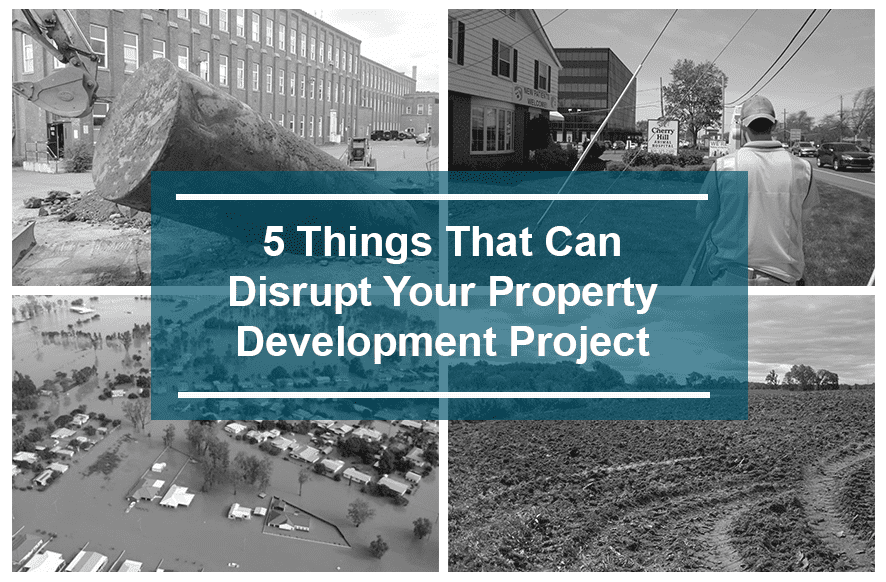The team behind the planned development of a much-needed addition to an existing charter school was excited and eager to move forward with their plans. They found a great location, designed the addition, purchased a dozen vacant lots, and began construction. Once the shovels hit the ground, however, problems began to arise. The properties they purchased were Brownfields, and acquired “as-is, where is.” Below the surface, excavation revealed contaminated materials and leaking underground storage tanks, accompanied by the typical soil and groundwater contamination.
As a full-service architecture and engineering firm with in-house environmental, civil engineering, surveying, and land use departments, LAN has seen completely preventable, but all too common, stories like this play out many times. When developing property, if you don’t do proper due diligence, you risk financial burdens, project delays, legal engagements, and even the potential of having your entire project fall through.
Don’t assume you are safe to build if you plan to use a site of undeveloped land. The need for vetting is not confined to environmental contamination from pre-existing structures. Failing to examine your site’s wetlands, transition areas, waters (i.e.-streams/lakes), riparian zones, tidelands, and flood hazard areas can all cause just as big a concern, as can local and county regulations.
Before I Buy Land for Development, What Type of Due Diligence Should I Do?
Check for Potential Environmental Contamination
Unforeseen environmental contamination can stop a development project in its tracks. Buried underground oil storage tanks, chlorinated solvents from dry cleaners and industrial sites, as well as pesticides, lead, and arsenic from past agricultural uses can all impact soil and groundwater, and even create harmful vapors inside a new building. Finding any of these issues midway through your project can force you into a costly and time-consuming cleanup and remediation process. The best way to avoid the expensive mistake of buying contaminated property is to have a Phase I Environmental Site Assessment performed. This assessment includes a review of historical uses and operations, state and local records, a site visit, interviews with available owners and occupants, and an evaluation of the findings. Taking this step not only allows you to avoid issues, or properly address them before site development has begun, it helps prevent future legal entanglements by establishing an “innocent purchase defense” that falls in line with EPA regulations.
Know What You Are Buying: Don’t Skip an ALTA Survey
An American Land Title Association (ALTA) Survey can help identify potential encumbrances that a standard real estate transaction survey may miss. This rigorous examination of your site can be customized by a professional surveyor to include optional data such as zoning, utility, flood zone, and wetland information.
Don’t Forget to Review Zoning Requirements
New Jersey, New York, and Pennsylvania have 564, 932, and 2,560 municipalities respectively, and each one can have unique zoning requirements. A thorough review of local zoning laws can expose uncommon and unforeseen restrictions by identifying the property zoning designation, evaluating the permitted uses in that zone, analyzing the overlay districts that may encumber the property, and examining the bulk requirements. This information is vital to pinpointing risks and determining if your plan for the property is feasible. Prior to purchase, you need to understand if your project will require a change in zone request or other variances that carry the significant risk associated with attaining new approvals.
Review of State & Regional Regulated Areas
You want to build; you need to be aware of state and regional regulated areas. Understanding the presence or absence of wetlands, transition areas, streams, flood hazard areas, riparian zones, and tidelands, is critical to mitigating risk in development. Identifying the limits of these regulated areas can be tricky and the extent of these areas can vary significantly from site to site. Regional regulated areas can include the Pinelands, Highlands, CAFRA, NJ Sports and Exposition Authority, etc. The rules that govern land use within these regions can significantly reduce the development potential of the property. Understanding the scope of allowable use and developable area is a critical factor when determining how much to invest in a property.
Accounting for Climate Change
Just because you can build on a site, doesn’t always mean you should. Most flood zone maps are working off decades of old information, and the escalating impacts of climate change like rising sea levels and increased storm water should be considered a very real factor when assessing the long-term viability of a potential development site. Even if you’re outside the regulated areas, before you decide to develop a site, you should consider how close you are to the current regulated areas and if flooding may impact you in the very near future.
In Summary: Why Due Diligence Isn’t Always Done
Proper vetting is an essential part of the development lifecycle, and you should never shy away from doing a comprehensive review of a site’s feasibility. It might add a small percent to your upfront cost, but it has the potential to save you time, money, and a whole lot of hassle. If your project architect or engineer does not have qualified specialists in house to vet your potential site, make sure professionals with the needed credentials are added to your team.




